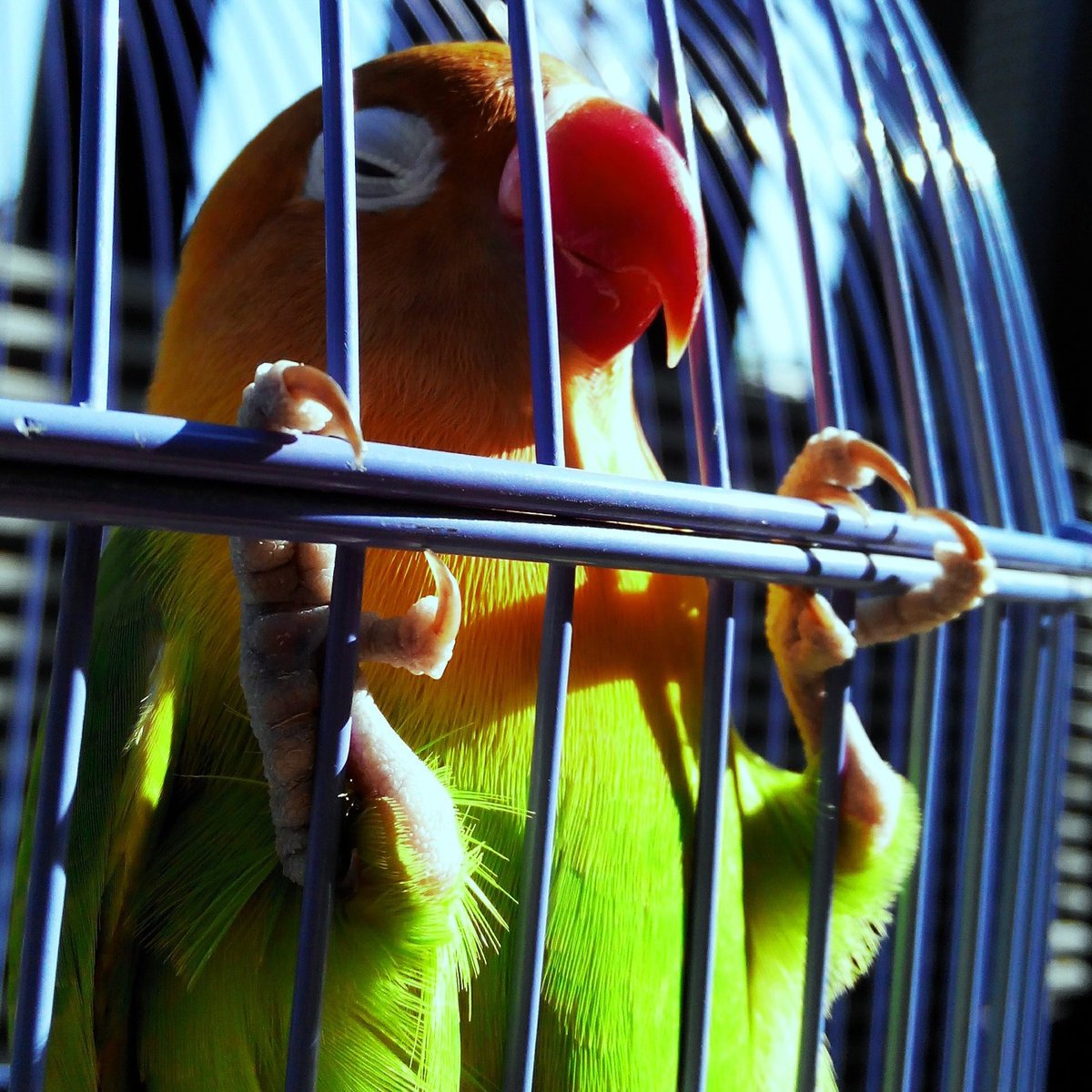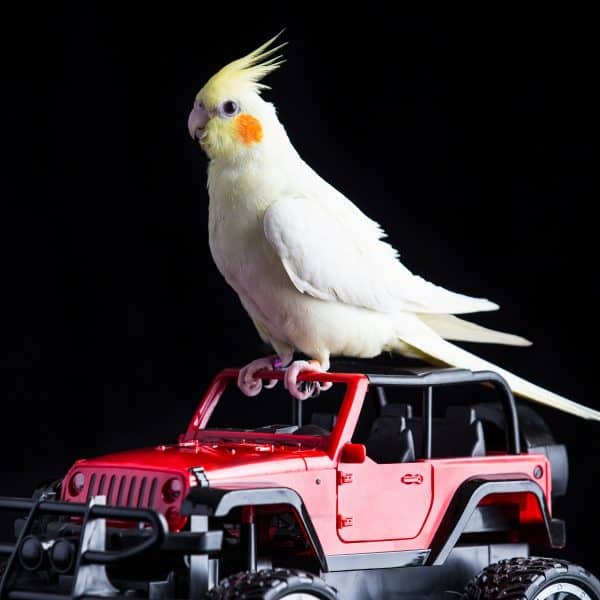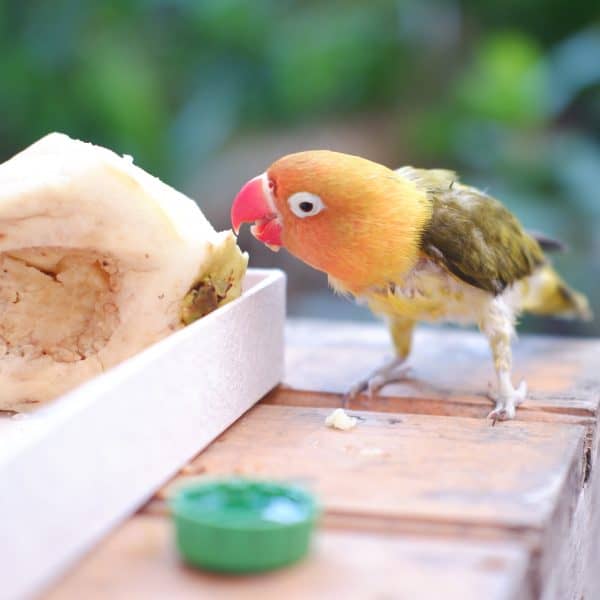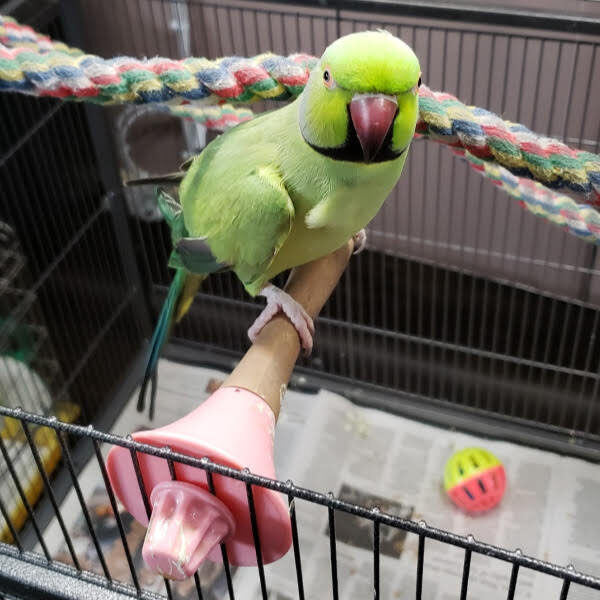Last Updated on by Mitch Rezman
Hello,
My name is Dylen T. and am 13 years old. I’m doing a 4-H project with a bird I have named Dani. Her father is a Peachface Lovebird and her mother is a Fischer Lovebird. She is 5 1/2 years old. Dani was all green with a red/orange face when she hatched.
About a year and a half ago she started losing the blue pigment in her feathers, now she looks almost exactly like her sister, Honey, the Lutino that was hatched in the brood after hers. Dani is doing everything she would normally do like play, eat, drink and bathe. Do you know what could make this happen in a lovebird? I would appreciate any help you can give me with this.
Thank you,
Dylen T
Hi Dylen
Thank you for your interesting question – Just as an FYI in my capacity with the International Heritage Conservancy we recently worked with a local 4-H group. We brought them together with Falconry and horses at McCrea Farm home to French Classical Dressage . It was a very productive session.
First some background. When most people outside the world of parrots think of parrots, they think of green parrots. The reality is there are no green pigments whatsoever in parrots. The only two pigments in parrot feathers are red and yellow. When you mix melanin into the feather structure you create the rainbow of colors most of us know parrots exhibit.
The reason we see different colors in feathers is due to the light scattering and reflecting off the structure much like the reason the sky is blue because blue is the shortest color wave in the visible spectrum and so it gets scattered across the (blue) sky. In science we call this the Tyndall effect.
Don’t get me wrong, parrots do have pigments in their feathers which are called psittacine pigments also known as carotenoids. Carotenoids are the things that make carrots orange and squash yellow. Birds, unlike vegetables, can have the color influenced by say, the foods they eat. A great example are flamingos who are born white but become the pinkish color of the shrimp they eat.
If we introduce a supplement like Higgins Snack Attack Color Egg Food Canary Proteen Red we can help maintain the rich plumage of red factor canaries. Circling back to the Tyndal effect it’s important to note here that a healthy bird whose feather sheen is improved will reflect light better than if we actually seek a change in color.
The amount of yellow and red psittacine is one part of the puzzle that determines the overall color of the bird. A blue mutation lovebird as you described, is a bird that has no red nor yellow psittacine. If the bird doesn’t have a healthy sheen to it the appearance of blue light-scattering is diminished thus the blue may look muted.
Another factor in determining how birds appear to us is something called Melanin. Melanin is the stuff that makes a fair-skinned person appear tan after spending time under bright sunlight. Although birds don’t “tan”, how dark or light the feathers are is controlled by Melanin.
Melanin pigments are protein granules colored black and brown within the structure of feathers. They help establish the main color of the feather of the bird by making it a little darker or a little lighter. So you may have what’s called a “dilute blue” which means there’s less Melanin as opposed to a dark blue bird with more Melanin in his feathers.
In “Pied” birds (in birds Pied acts by removing Melanin) plumage has contrasting colors like Pied Cockatiels the pied portion (the yellow to white portion) comprises about 25% of the bird and the rest of the bird is gray. It also may differ in various parts of the feathers giving the bird a variegated look. In “ino” mutations such as Lutino or Albino, there’s a complete absence of Melanin.
The actual structure of the feather can affect the color of the bird as well. Changes in feather structure will affect how light reflects off the feather giving the viewer a different color interrpretation. Dark factors will change the actual structure of the feather bar which also changes your perception of the bird’s colors, as the feathers will reflect light differently.
So getting back to your original question, I wish I can give you a single answer. It could be a nutritional issue or it could be something in the bloodline. We’ve seen pearl Cockatiels lose their “pearls” over time. The first place to start is with your veterinarian to make sure there’s no health issues. I would also examine the ingredients of the food your’re using to make sure your birds are getting the best nutritionally balanced diet available.
Mitch Rezman
Windy City Parrot
Author Profile
Latest entries
 The Traveling BirdJune 26, 2025Can You Name 5 Parrot Species That Are Living Wild in the USA?
The Traveling BirdJune 26, 2025Can You Name 5 Parrot Species That Are Living Wild in the USA? Bird BehaviorJune 26, 2025How is it Parrots Are Problem Solvers Social Animals and Even Use Tools?
Bird BehaviorJune 26, 2025How is it Parrots Are Problem Solvers Social Animals and Even Use Tools? Bird & Parrot AnatomyJune 25, 2025How a Tiny Chemical Modification Makes Parrots Nature’s Living Paintings
Bird & Parrot AnatomyJune 25, 2025How a Tiny Chemical Modification Makes Parrots Nature’s Living Paintings PigeonsJune 20, 2025How Do Parrots Thrive in Cities Outside Their Native Habitats?
PigeonsJune 20, 2025How Do Parrots Thrive in Cities Outside Their Native Habitats?




